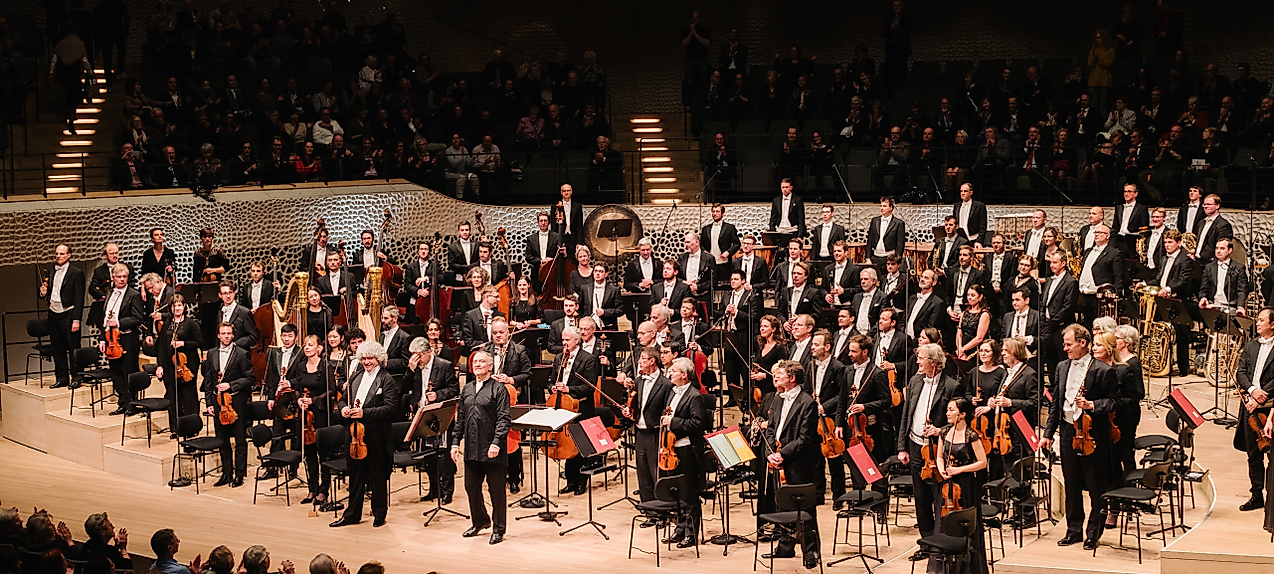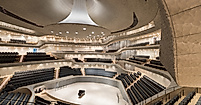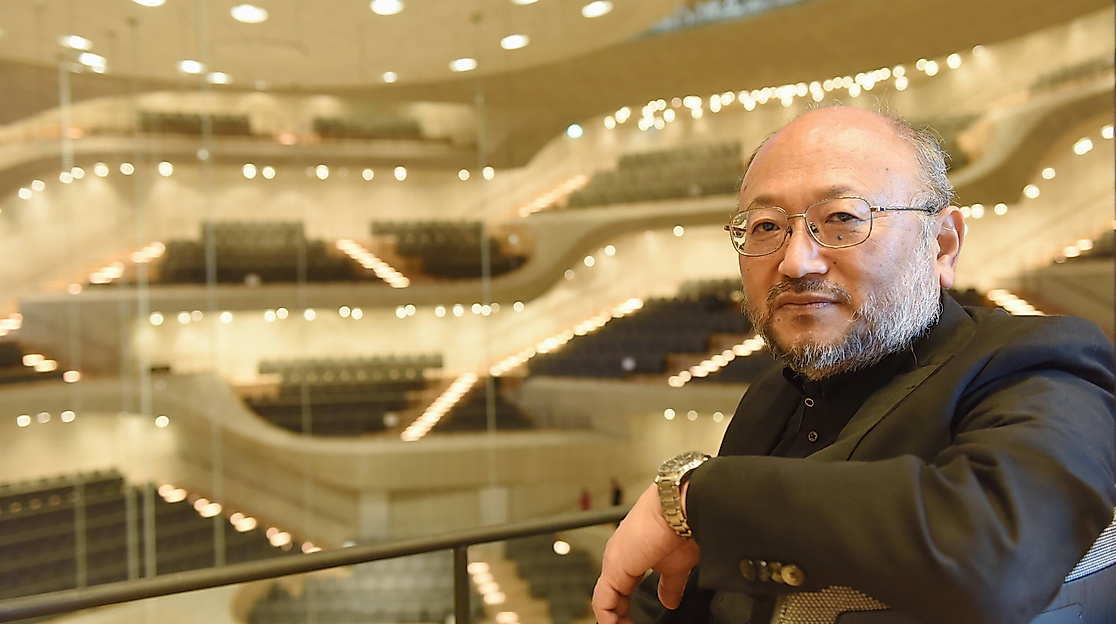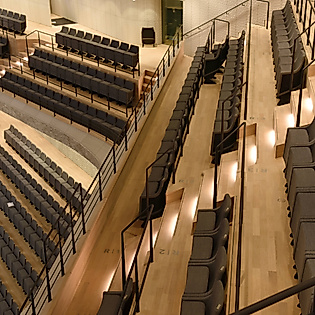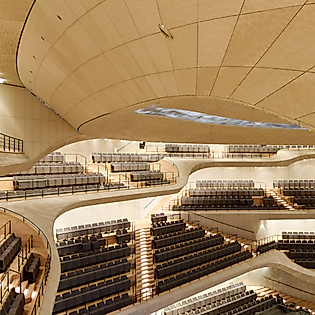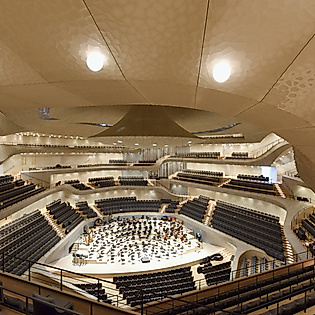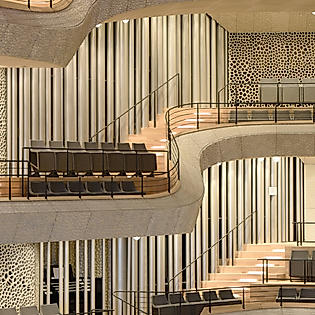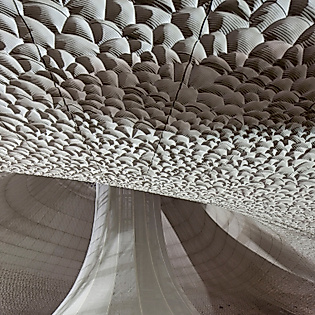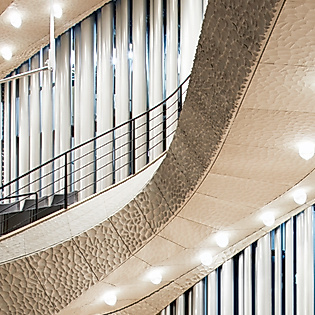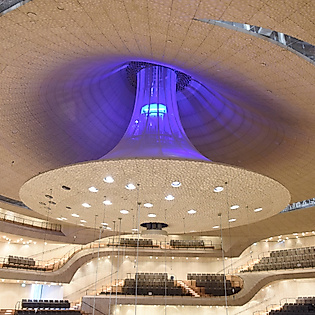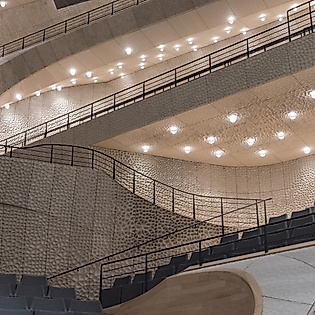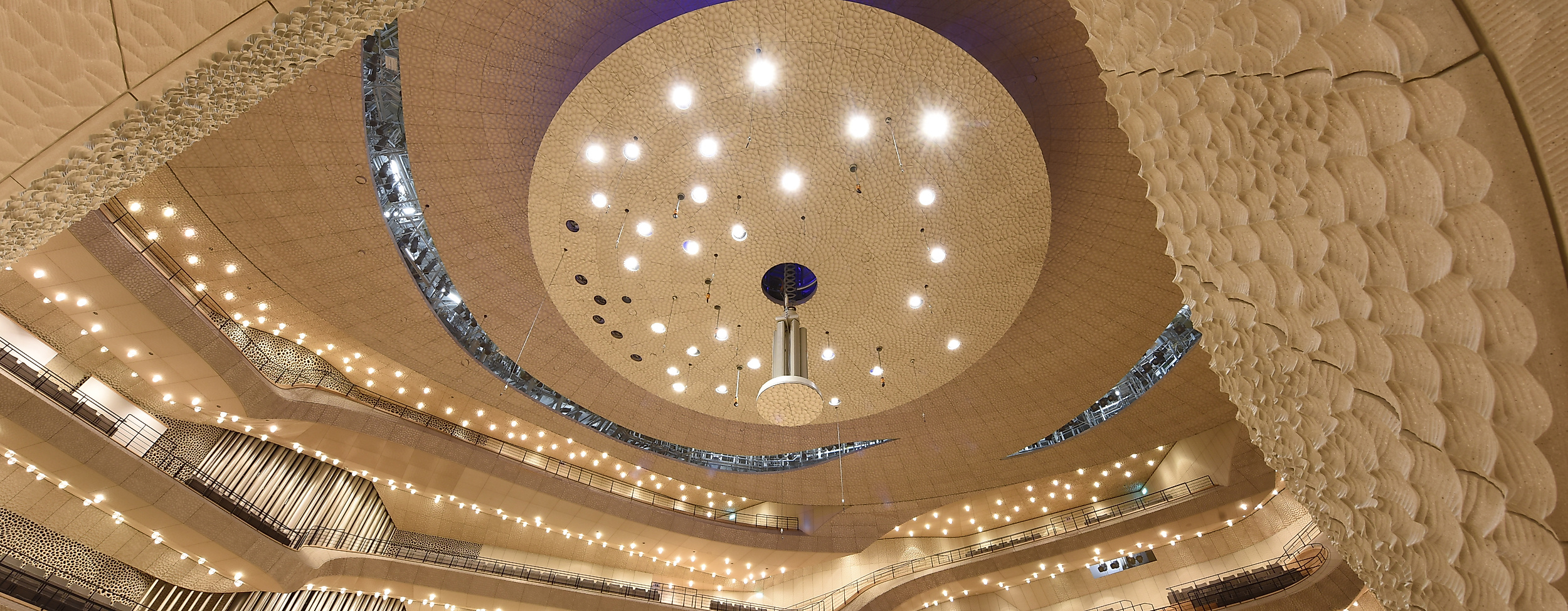
The interface between architecture and sound
The fact that these experiences can take place at the highest sound level in the Elbphilharmonie is due to a 64-year-old Japanese with a rare, almost unknown professional title: "Sound Architect". His name is Yasuhisa Toyota and he is one of the most renowned and sought-after acousticians in the world. In close cooperation with architects Herzog & de Meuron, the acoustics specialist is responsible for the sound concept of the Elbphilharmonie at the interface of design and architecture.
You can't see what makes up the core of his work - but you can hear it: Toyota is one of a handful of specialists worldwide who knows how to create the sound that will enchant classical music fans. The man is in international demand: the portfolio of his Tokyo company Nagata Acoustics, in which Toyota once began as an apprentice and which he now heads, includes around 60 concert halls and prestigious venues, including the Sydney Opera House, the Concert House in Copenhagen and the Walt Disney Concert Hall in Los Angeles, designed by Frank Gehry.
The same sound for everyone
Toyota's mission in the Elbphilharmonie project was to create the same sound for everyone - every seat in the Grand Hall should offer the same perfect sound experience. With more than 2,100 concert visitors in the concert hall, this is an ambitious goal. But Toyota and his team have succeeded.
The "vineyard principle"
The solution that Toyota and his team devised, together with the architects from Herzog & De Meuron, is based on the so-called vineyard principle, in which the audience ranks are grouped around the orchestra in the middle of the hall. No visitor sits more than 30 m away from the conductor in the Grand Hall.
10,000 individually milled, flaky gypsum fibreboards
Technology, calculations and millimetre work are the vocabulary that the physicists, engineers and electrical engineers in Toyota's team must master perfectly. With the goal of the democracy of sound in mind, the idea of the so-called "white skin" for the wall and ceiling cladding in the concert hall was born: 10,000 individually milled, flaky gypsum fibreboards, each of which weighs around 70 kilos (their production alone took one year because the corresponding machines had to be built first). The purpose of the panels: to form reflectors that break and reflect the tones played by the orchestra in the concert hall, thus providing ideal acoustics. In most concert halls, a maximum of five percent of the sound reaching the ear comes directly from the stage - the rest has been reflected at least once somewhere in the hall.
Sound & Plywood
The "white skin" alone is a complicated construct that Toyota and his team had to meticulously plan well in advance. In their model, Toyota and his team took microphone measurements of the audio frequencies (between spectator dolls with felt dresses and small wigs!) and changed details as well as aligned and calibrated distances at various points over a period of months.
A huge funnel coming from the ceiling is the finishing touch of the acoustic experience in the Grand Hall of the Elbphilharmonie: The large sound reflector was adjusted and fixed by Toyota himself. Whoever hears the first fleeting musical sounds floating through the Grand Hall of the Hamburg Elbphilharmonie notices that Toyota's sensitive seven-year-long work paid off. And this probably reveals what the Indian Sufi master and musician Hazrat Inayat Khan meant when he said: "Those who know the secret of the tones know the mystery of the whole universe".
